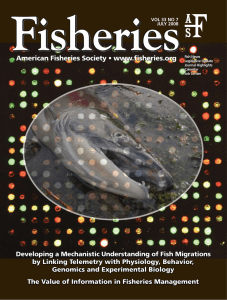!"#$%&'()%*)+,#'(-.)
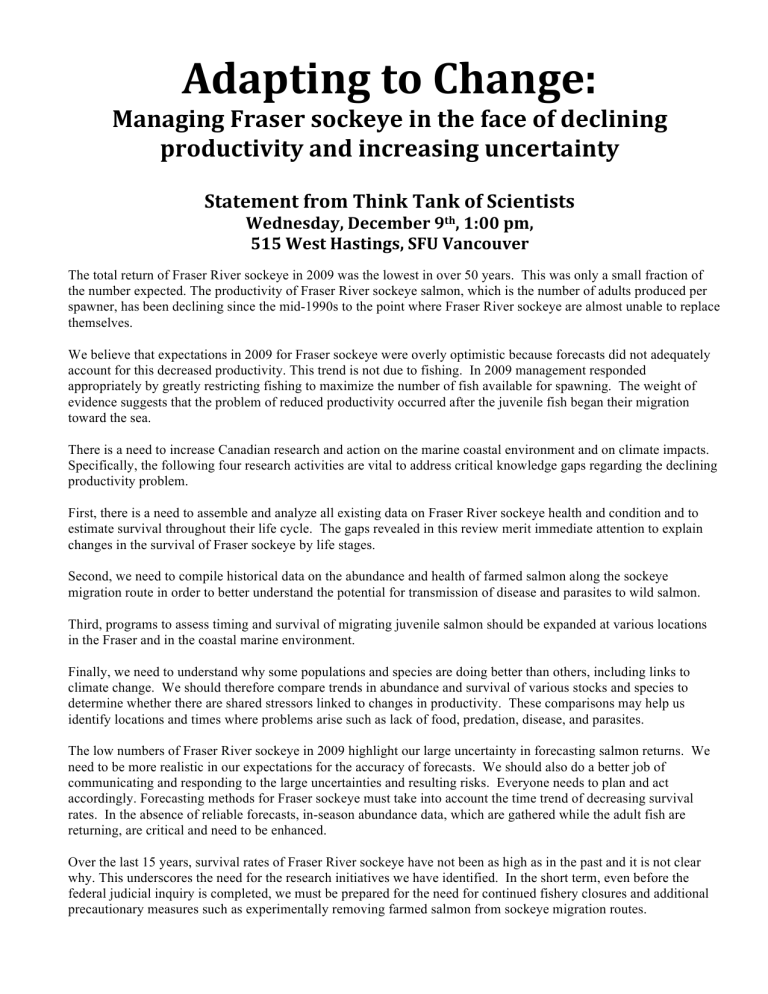
!
!"#$%&'()%*)+,#'(-.)
/#'#(&'()01#2-1)2*34-5-)&')%,-)6#3-)*6)"-37&'&'()
$1*"83%&9&%5)#'")&'31-#2&'()8'3-1%#&'%5)
)
:%#%-;-'%)61*;)<,&'4)<#'4)*6):3&-'%&2%2)
=-"'-2"#5>)?-3-;@-1)A %, >)B.CC)$;>))
DBD)=-2%)E#2%&'(2>):0F)G#'3*89-1)
!
The total return of Fraser River sockeye in 2009 was the lowest in over 50 years. This was only a small fraction of the number expected. The productivity of Fraser River sockeye salmon, which is the number of adults produced per spawner, has been declining since the mid-1990s to the point where Fraser River sockeye are almost unable to replace themselves.
We believe that expectations in 2009 for Fraser sockeye were overly optimistic because forecasts did not adequately account for this decreased productivity. This trend is not due to fishing. In 2009 management responded appropriately by greatly restricting fishing to maximize the number of fish available for spawning. The weight of evidence suggests that the problem of reduced productivity occurred after the juvenile fish began their migration toward the sea.
There is a need to increase Canadian research and action on the marine coastal environment and on climate impacts.
Specifically, the following four research activities are vital to address critical knowledge gaps regarding the declining productivity problem.
First, there is a need to assemble and analyze all existing data on Fraser River sockeye health and condition and to estimate survival throughout their life cycle. The gaps revealed in this review merit immediate attention to explain changes in the survival of Fraser sockeye by life stages.
Second, we need to compile historical data on the abundance and health of farmed salmon along the sockeye migration route in order to better understand the potential for transmission of disease and parasites to wild salmon.
Third, programs to assess timing and survival of migrating juvenile salmon should be expanded at various locations in the Fraser and in the coastal marine environment.
Finally, we need to understand why some populations and species are doing better than others, including links to climate change. We should therefore compare trends in abundance and survival of various stocks and species to determine whether there are shared stressors linked to changes in productivity. These comparisons may help us identify locations and times where problems arise such as lack of food, predation, disease, and parasites.
The low numbers of Fraser River sockeye in 2009 highlight our large uncertainty in forecasting salmon returns. We need to be more realistic in our expectations for the accuracy of forecasts. We should also do a better job of communicating and responding to the large uncertainties and resulting risks. Everyone needs to plan and act accordingly. Forecasting methods for Fraser sockeye must take into account the time trend of decreasing survival rates. In the absence of reliable forecasts, in-season abundance data, which are gathered while the adult fish are returning, are critical and need to be enhanced.
Over the last 15 years, survival rates of Fraser River sockeye have not been as high as in the past and it is not clear why. This underscores the need for the research initiatives we have identified. In the short term, even before the federal judicial inquiry is completed, we must be prepared for the need for continued fishery closures and additional precautionary measures such as experimentally removing farmed salmon from sockeye migration routes.
Climate change poses a major threat to the future of Fraser River salmon, not only through direct effects of temperature on the fish, but also through impacts on food webs and habitats. Management agencies must take this information into account in order to meet the objectives of Canada’s Wild Salmon Policy, which include maintaining biodiversity as well as monitoring and protecting habitat.
These are clearly challenging times for Fraser River sockeye salmon. The scientists in the Think Tank are confident
!
that taking the appropriate research initiatives and management actions immediately will improve the prospects for these fish and their ecosystems, to the benefit of the many people who depend upon them.
!!
!
!
!
For more visit or website: http://www.sfu.ca/cstudies/science/adaptingtochange.htm
!
Contact:
John Reynolds, Tom Buell Leadership Chair in Salmon Conservation, SFU, 778.782.5636
Laurie Wood, Coordinator, Centre for Coastal Studies, SFU, 778.782.5466
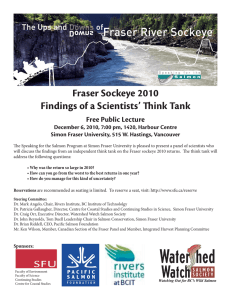
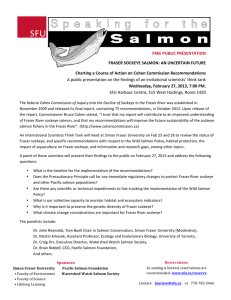
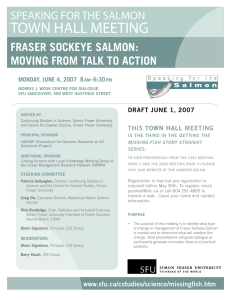

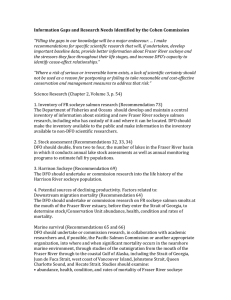
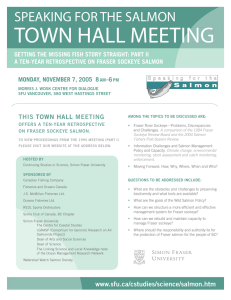
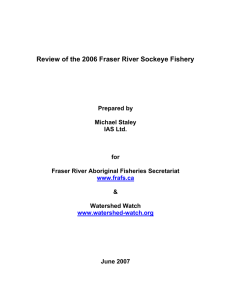

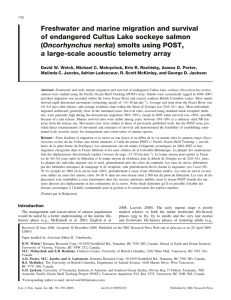
![[Article]](http://s2.studylib.net/store/data/011268910_1-11453f99829a41b45cd3fe5548a57f96-300x300.png)
